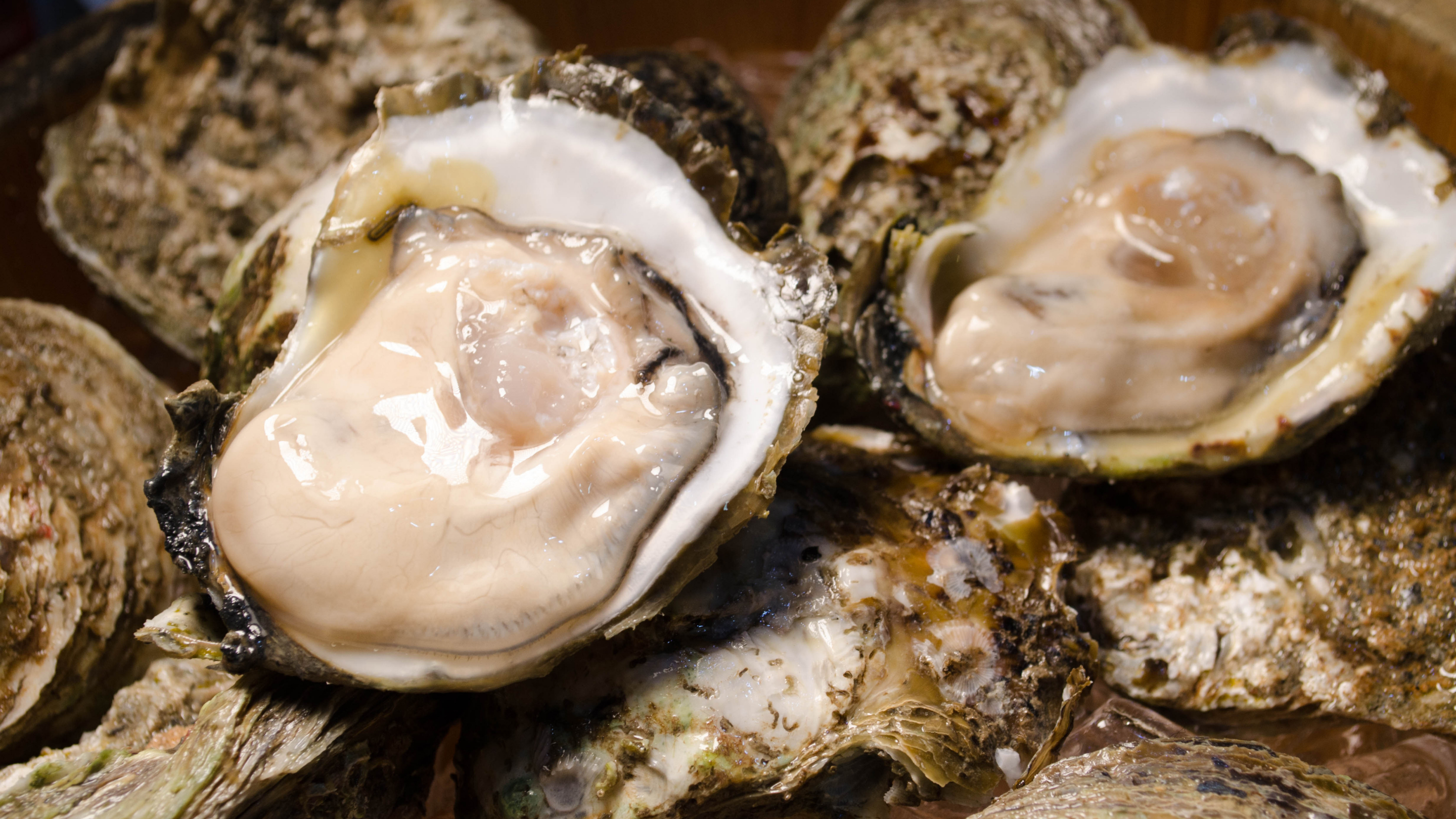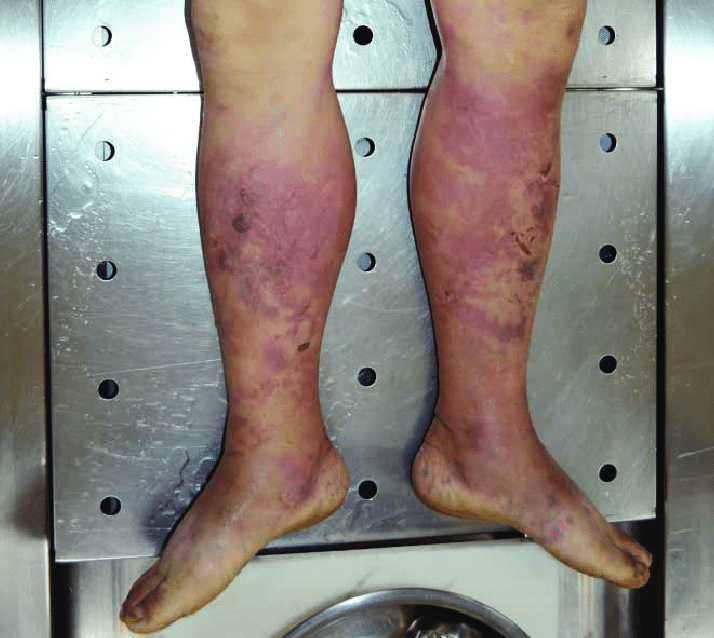Missouri Man Dies Of Flesh Eating Bacteria After Eating Raw Oysters
A tragic incident has occurred in the St. Louis suburb of Manchester, Missouri, where a 54-year-old Missouri man dies of flesh eating bacteria after eating raw oysters. The man, whose identity remains undisclosed by officials, fell ill shortly after purchasing the oysters from The Fruit Stand & Seafood, as reported by NBC News.
Author:Morgan MaverickReviewer:Professor JhizJun 15, 20233.8K Shares211.6K Views

A tragic incident has occurred in the St. Louis suburb of Manchester, Missouri, where a 54-year-old Missouri man dies of flesh eating bacteria after eating raw oysters. The man, whose identity remains undisclosed by officials, fell ill shortly after purchasing the oysters from The Fruit Stand & Seafood, as reported by NBC News.
54 Year Old Missouri Man Dies Of Flesh Eating Bacteria After Eating Raw Oysters
The specific bacterium responsible for this unfortunate event is known as Vibrio vulnificus, which typically results from the consumption of raw or undercooked seafood.
Infections caused by Vibrio vulnificus can be severe, often necessitating intensive care or even limb amputations. Shockingly, approximately one in five individuals infected with this bacterium succumb to the illness. In some cases, the infection can escalate into necrotising fasciitis, a grave condition wherein the flesh surrounding an open wound begins to deteriorate.
Promptly responding to the incident, the St. Louis County Public Health Department has issued a statement advising customers who recently purchased oysters from The Fruit Stand & Seafood to dispose of any remaining stock. The health department clarified that there is currently no evidence suggesting any misconduct on the part of the business.
“„There is no evidence that the business did anything to contaminate the oysters, which likely were already contaminated when the establishment received them.- St. Louis County Public Health Department
Health officials are now conducting an investigation to determine the source of the contamination, striving to prevent any further cases of this nature.
This bacterium is responsible for more than 95% of seafood-related deaths in the country, with a mortality rate of around 33%, as revealed by the health department.
To minimize the risk of infection, the CDCP offers several precautionary measures. Firstly, individuals are advised to avoid consuming raw or undercooked oysters and other shellfish. Furthermore, it is crucial to thoroughly wash hands after handling raw shellfish.
If an individual has a wound, it is strongly recommended to refrain from entering salt water or brackish water, as exposure to these environments increases vulnerability to Vibrio vulnificus.
A study published in the journal Scientific Reports highlights a concerning projection. Rising sea temperatures are predicted to contribute to a potential doubling of Vibrio vulnificus infections along the East Coast of the United States within the next 20 years. The report emphasizes that Vibrio species, including Vibrio vulnificus, serve as an indicator of climate change due to their sensitivity to temperature fluctuations.
The study further explains that even minor skin lesions exposed to salt water can serve as an entry point for the bacterium, and urgent surgical intervention or limb amputation is required in 10% of cases.
In addition to the devastating health consequences, Vibrio vulnificus infection also incurs substantial economic costs. The illness is estimated to result in an annual financial burden of approximately $320 million (AUD $473 million) in the United States, rendering it the most expensive marine pathogen to treat.
As Vibrio vulnificus infections continue to pose a significant threat, it is imperative that individuals exercise caution and adhere to preventive measures recommended by health authorities.

Man dies after eating raw oysters in Missouri
By avoiding the consumption of raw or undercooked seafood, maintaining proper hand hygiene, and refraining from contact with salt water or brackish water when wounded, the risk of contracting this potentially fatal infection can be significantly reduced.
Vibriosis - Understanding The Risks And Preventive Measures
Vibriosis is a serious illness caused by certain types of Vibrio bacteria, commonly found in coastal waters where oysters thrive. When oysters filter water to feed, they can accumulate Vibrio and other harmful germs in their tissues. Consuming raw or undercooked oysters contaminated with these germs can lead to illness.
In the United States, the Centers for Disease Control and Prevention (CDC) estimates that approximately 80,000 people contract vibriosis each year, resulting in about 100 deaths. Most cases occur between May and October when water temperatures are warmer, but it's important to note that vibriosis can occur year-round. Even oysters from colder waters can carry Vibrio and cause illness.
It's difficult to detect Vibrio in oysters, as infected oysters don't look, smell, or taste different from non-infected ones. However, proper cooking can eliminate Vibrio bacteria from shellfish, ensuring safer consumption.
Symptoms Of Vibriosis
The symptoms of vibriosis vary. Most infections from oysters result in mild illness characterized by:
- diarrhea
- vomiting
However, infections with Vibrio vulnificus, a specific strain of Vibrio, can be severe and potentially life-threatening. Approximately one in five individuals infected with Vibrio vulnificus die due to complications such as bloodstream infections, severe skin blistering, and even limb amputations.
If you experience symptoms of vibriosis, it is essential to inform your healthcare provider if you have recently consumed raw oysters or other raw shellfish, or if you have had contact with salt water or brackish water. Brackish water is a mixture of salt water and fresh water often found where rivers meet the ocean.

Vibrio vulnificus Symptoms, Treatment, and Causes
Certain individuals are at a higher risk of developing severe vibriosis.
These individuals are more susceptible:
- Liver disease
- Cancer
- Diabetes
- HIV
- Blood disorder thalassemia
- Receiving immune-suppressing therapy
Additionally, individuals who take medication to lower stomach acid levels, have recently undergone stomach surgery, or are 65 years or older are also at an increased risk.
How Do You Get Vibriosis?
Vibriosis can be contracted by consuming raw or undercooked shellfish, particularly oysters. Additionally, the infection can occur through contact with brackish or salt water. This includes swimming, wading, or fishing in such waters or coming into contact with items like rocks or piers that have been exposed to them. Infections can also result from contact with raw seafood juices or drippings.
How To Reduce The Risk Of Vibriosis?
To reduce the risk of vibriosis, it is crucial to follow these preventive measures when handling and consuming shellfish and other seafood:
- Avoid consuming raw or undercooked oysters or shellfish. Ensure that they are fully cooked before eating. When dining out, order fully cooked oysters.
- Hot sauce, lemon juice, and alcohol do not kill Vibrio bacteria, so they cannot be relied upon to eliminate the risk.
- Some oysters undergo post-harvest treatment to enhance safety by reducing Vibrio levels. However, this treatment does not eliminate all harmful germs, so caution is still necessary.
- Separate cooked seafood from raw seafood and its juices to prevent cross-contamination.
- Thoroughly wash hands with soap and water after handling raw seafood.
- If you have a wound, avoid contact with salt water or brackish water, as it may increase the risk of infection.
- Cover any wounds that might come into contact with raw seafood or its juices, as well as those exposed to salt water or brackish water.
- Clean open wounds and cuts with soap and water if they have been in contact with salt water, brackish water, raw seafood, or its juices.

VERIFY: Should you only eat raw oysters in months ending in 'R?'
When it comes to cooking shellfish, it is important to follow proper guidelines:
- Discard any shellfish with open shells before cooking.
- For shellfish in the shell, boil them until the shells open and continue boiling for an additional 3-5 minutes. Alternatively, add them to a steamer when the water is already steaming and cook for 4-9 minutes. Only consume shellfish that fully open during cooking, and discard any that remain closed after cooking.
- For shucked oysters, boil them for at least 3 minutes, fry them in oil at a temperature of at least 375°F for 3 minutes, broil them 3 inches from the heat source for 3 minutes, or bake them at 450°F for 10 minutes.
Vibriosis And Skin Infections
Vibrio vulnificus, the bacterium responsible for vibriosis, naturally resides in warm, salty, or brackish water. It is a close relative of the bacteria that causes cholera. Vibrio can be found in coastal waters around the world, including the Gulf of Mexico and the coastal waters of the East and West Coasts in the United States. The bacteria thrives during warmer months, when ocean temperatures are highest.
Infections can occur through exposure to water with high concentrations of Vibrio or by consuming contaminated seafood.
Skin infections resulting from Vibrio vulnificus may manifest as:
- blisters
- abscesses
- ulcers
In severe cases, necrotizing fasciitis, a flesh-eating infection, can occur, affecting the skin, muscles, nerves, fat, and blood vessels surrounding an infected wound.
It is important to note that most Vibrio infections in the United States stem from eating raw or undercooked seafood, particularly oysters. The bacteria can inhabit the digestive system of fish, oysters, and other shellfish, leading to contamination. Proper food handling and cooking techniques are crucial to reducing the risk of infection.
Vibriosis And Hurricanes
Hurricanes can also play a role in the spread of Vibrio vulnificus infections. Floodwaters associated with hurricanes can carry high concentrations of the bacteria into people's homes, exposing them to the risk of infection.
After Hurricane Ian in Lee County, Florida, there were 28 reported cases of Vibrio infection linked to floodwater exposure during cleanup efforts.
The rise in hurricanes and warming oceans due to climate change are concerns for scientists, as they can increase the frequency of these infections.
Vibriosis Treatment
When it comes to treatment, it is essential to seek medical attention promptly if you suspect a Vibrio infection. Doctors will collect samples from the infected area to confirm the presence of Vibrio vulnificus.
Treatments involve are:
- draining abscesses
- topical application of antibiotics
- skin protectants
To prevent the spread of the infection in severe cases:
- surgery
- limb amputation
However, it is worth noting that Vibrio vulnificus has developed some resistance to certain antibiotics, with up to 50% of infections showing reduced responsiveness.
People Also Ask
How Long Does Oyster Poisoning Last?
The duration of oyster poisoning caused by Vibrio parahaemolyticus contamination typically spans from 3 to 8 days. After consuming raw oysters contaminated with this bacterium, symptoms generally manifest within 3 to 48 hours. Common symptoms include diarrhea and vomiting, which may persist for a period of 3 to 8 days.
Can You Get A Bacterial Infection From Oysters?
Consuming raw oysters and other undercooked seafood can potentially expose individuals to bacterial infections, including a condition known as vibriosis, which is caused by specific strains of Vibrio bacteria. Vibrio bacteria naturally reside in the coastal waters where oysters thrive. As oysters filter water to obtain nutrients, bacteria can accumulate in their tissues, increasing the risk of contamination.
When Should You Not Eat Oysters?
Traditional wisdom in the culinary world suggests refraining from consuming wild oysters during months without the letter "r" – from May to August – to avoid encountering oysters with excessive water content or, worse, the risk of food poisoning.
Conclusion
In a tragic incident, a Missouri man dies of flesh eating bacteria after eating raw oysters. This unfortunate event serves as a somber reminder of the potential risks associated with consuming raw seafood. Vibrio bacteria, naturally present in coastal waters where oysters thrive, can cause severe infections, including necrotising fasciitis.
It is crucial for individuals to prioritize their safety by following guidelines to prevent such infections, including avoiding the consumption of raw or undercooked oysters, practicing proper hand hygiene, and refraining from entering salt water or brackish water if wounded. By staying informed and taking necessary precautions, we can reduce the chances of falling victim to such devastating illnesses.

Morgan Maverick
Author
Morgan Maverick is an unorthodox news reporter driven by an insatiable hunger for the truth. Fearless and unconventional, he uncovers hidden narratives that lie beneath the surface, transforming each news piece into a masterpiece of gritty authenticity. With a dedication that goes beyond the boundaries of conventional journalism, Morgan fearlessly explores the fringes of society, giving voice to the marginalized and shedding light on the darkest corners.
His raw and unfiltered reporting style challenges established norms, capturing the essence of humanity in its rawest form. Morgan Maverick stands as a beacon of truth, fearlessly pushing boundaries and inspiring others to question, dig deeper, and recognize the transformative power of journalism.

Professor Jhiz
Reviewer
Professor Jhiz brings fun to teaching anatomy. Born in China, she shares her fascination for how the body works.
Students say her lectures are lively with jokes and stories. She draws cartoon diagrams that highlight structures creatively.
Professor seeks to inspire curiosity and joy in anatomy. She treats each class like a show using props and costumes.
When not teaching, Jhiz enjoys karaoke and novelty socks. Her goal is passing on a spirit of wonder to students.
Latest Articles
Popular Articles

